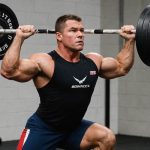Effective leadership and communication elevate a point guard's game. UK basketball demands more than skill; it requires the ability to unite a team and execute plays. Understanding non-verbal cues, establishing trust, and fostering open dialogue are essential components of a successful strategy. This guide delves into practical techniques point guards can employ to enhance their on-court presence and lead their teams to victory. Discover how developing these skills can transform a player's performance and create a cohesive unit.
Leadership Strategies for UK Basketball Point Guards
In the dynamic world of basketball, the point guard plays a pivotal role in orchestrating the team's performance. Known as the "floor general," their leadership on the court is crucial for maintaining effective team dynamics. A point guard must possess a keen understanding of the game, enabling them to make quick decisions that benefit the entire team.
Also read : Unlocking Speed: Strategies for UK Basketball Players to Enhance Their Offensive First Step
Leadership in basketball involves more than just skillful play; it requires building trust and respect among teammates. Successful point guards achieve this by demonstrating consistency, communication, and a strong work ethic. By leading by example, they inspire their teammates to elevate their performance, fostering a cohesive and motivated unit.
Real-world examples of effective point guard leadership can be seen in UK basketball, where players like Sue Bird and Magic Johnson have set high standards. Their ability to read the game, coupled with their strategic thinking, has earned them respect and admiration. These leaders have shown that by prioritising teamwork and maintaining a positive attitude, a point guard can significantly influence the team's success on the court.
Also to read : Unlocking Performance: The Power of Video Analysis for UK Basketball Players to Elevate Their Game
Ultimately, a point guard's leadership is about steering the team towards victory while nurturing a supportive and collaborative environment.
Effective Communication Skills
In basketball, communication in sports is essential for success. For point guards, mastering both verbal and non-verbal communication techniques can significantly enhance team dynamics and performance.
Verbal Communication Techniques
Point guards must employ key phrases and commands to facilitate effective basketball communication. These verbal cues help in play calling and ensure that all team members are aligned with the game plan. Encouraging open dialogue and feedback among players is crucial, as it fosters a culture of trust and adaptability. By actively engaging in team communication, point guards can address concerns and strategize efficiently.
Non-Verbal Communication
Understanding body language on the court is another vital aspect of communication. Point guards can utilise signals and gestures to enhance team coordination without breaking the flow of the game. These non-verbal cues are subtle yet powerful tools that can convey urgency or direction, ensuring that teammates are always in sync.
Active Listening Skills
Active listening is pivotal in understanding teammates' perspectives. By prioritising listening, point guards can ensure all voices are heard, fostering inclusivity and collaboration. Implementing strategies such as paraphrasing and asking clarifying questions can further solidify team communication, ultimately leading to more cohesive play.
Enhancing Team Dynamics
In basketball, team cohesion is pivotal for achieving success. Building chemistry among players can be fostered through various team activities, such as group training sessions and team-building exercises. These activities not only enhance basketball team dynamics but also create a sense of unity and trust among teammates.
A point guard plays a crucial role in influencing group dynamics. Their leadership can significantly impact team morale and performance. By maintaining a positive attitude and encouraging open communication, point guards can uplift the team's spirit, ensuring that each player feels valued and motivated. This, in turn, enhances the overall performance on the court.
Conflicts are inevitable in any team setting, but effective strategies can help resolve them efficiently. Point guards can mediate disputes by fostering an environment of mutual respect and understanding. Encouraging open dialogue and active listening allows players to express their concerns and work towards a resolution collaboratively. By addressing conflicts promptly and constructively, point guards can maintain harmony within the team, ensuring that focus remains on achieving collective goals.
Ultimately, enhancing team dynamics is about creating a supportive environment where every player feels empowered to contribute to the team's success.
Role-Specific Drills for Point Guards
Developing specific skills is essential for point guards to excel in their role. Basketball drills tailored to their needs can enhance their performance significantly.
Dribbling and Ball Handling Drills
Improving control and agility is crucial for point guards. Drills such as the zigzag dribble and cone drills enhance these skills. Practising these exercises helps players maintain composure under pressure, ensuring they can navigate through tight defenses effectively.
Passing Drills
Accurate and effective passing is vital for a point guard. Techniques like the chest pass and bounce pass should be regularly practised. Incorporating these passing drills into team practices ensures that point guards can deliver precise passes, facilitating smooth team play and creating scoring opportunities.
Decision-Making Drills
Simulating game scenarios is an effective way to develop quick thinking. Decision-making drills, such as the 3-on-2 fast break, help point guards enhance their situational awareness. By practising these scenarios, point guards can improve their ability to make swift decisions, adapting to the evolving dynamics of a game. This strategic development is key to mastering the art of leading a basketball team effectively.
Insights from Experienced Coaches and Players
In the realm of basketball expertise, insights from seasoned professionals can be invaluable for aspiring point guards. Interviews with UK basketball coaches reveal that point guard development hinges on a blend of skill refinement and mental resilience. Coaches stress the importance of adaptability, emphasising that a point guard must read the game and adjust strategies on the fly.
Quotes from veteran point guards further highlight the nuances of the role. One seasoned player advises, "Understanding your teammates' strengths is key. It's not just about scoring; it's about enabling others to excel." This encapsulates the essence of effective leadership on the court.
Coaching insights also underscore the significance of communication. A UK coach notes, "A point guard must be the loudest voice on the court, orchestrating plays and boosting morale." This aligns with the broader player experiences, where communication is often cited as a critical component in maintaining team cohesion.
Lessons from competitive play suggest that experience is the best teacher. Players learn to navigate pressure situations, developing a keen sense of timing and decision-making. Such experiences are vital, shaping a point guard's ability to lead with confidence and authority.
Visual Aids and Resources
In the world of basketball, leveraging visual aids and resources is essential for enhancing understanding and performance.
Diagrams and Playbooks
Diagrams and playbooks are crucial for grasping complex plays. They provide a clear visual representation, making it easier for players to comprehend and execute strategies. Effective playbook layouts often include step-by-step breakdowns of each play, accompanied by diagrams that highlight player movements and positioning. These visual tools serve as a reference, enabling players to internalise tactics and improve their basketball resources.
Videos and Tutorials
Videos and tutorials offer dynamic learning opportunities. Recommended resources include instructional videos that focus on specific skills, such as dribbling or passing. Online platforms like YouTube host countless tutorials, allowing players to learn at their own pace. Utilising these platforms for skill development encourages continuous improvement and provides access to a wealth of training aids.
Additional Reading and Tools
For those seeking to deepen their understanding, additional reading materials such as books and articles on basketball leadership and communication are invaluable. These resources offer insights into the nuances of team dynamics and effective communication. Additionally, tools for self-assessment, like performance tracking apps, aid in identifying areas for improvement, supporting players in honing their skills.













